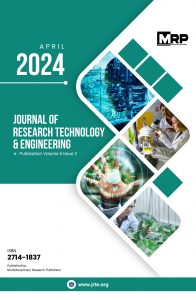Downloads
Hazard Identification and Risk Assessment of X-press Pearl Marine Disaster
The X-Press Pearl incident can be considered as the worst maritime disaster to have struck in the history of Sri Lanka. It had a significant impact on Sri Lanka’s sensitive costal environment, local communities and the economy. The extent of the disaster caught the attention of international bodies including the United Nations (UN). This paper …
Hazard Identification and Risk Assessment of X-press Pearl Marine DisasterRead More
Proposing a hazard identification and risk analysis system to mitigate the impact of shipping on the marine environment
The X-Press Pearl incident is the worst maritime disaster to have struck Sri Lanka. It has significantly impacted Sri Lanka’s sensitive coastal environment, local communities, and economy. In this situation, Sri Lanka is unable to manage itself. There Sri Lanka had to seek assistance from another country. In a short period, Sri Lanka has been …
Evaluation of the Risk Associated with Marine Environment
A hazard identification and risk analysis system can be applied to various activities and processes, including manufacturing, construction, transportation, and other industries. The system helps to identify and address potential hazards before they result in accidents or incidents, which can help to minimize the risk of injury, damage to property, and environmental impacts. This paper …
Evaluation of the Risk Associated with Marine EnvironmentRead More
Bioplastics for sustainable future
Bioplastics are a type of material that can decompose or come from renewable sources, such as plant starch and Cellulose. These materials show great potential as an eco-friendly alternative to regular plastics because they assist in minimizing the adverse effects that plastic manufacture, use, and disposal have on the environment. Furthermore, bioplastics may significantly reduce …
Potential Renewable Energy Sources in Sri Lanka
The primary energy source of Sri Lanka is fossil fuels such as diesel and coal. Sri Lanka used 12.8 million tons of oil equivalent energy in 2020, consisting of 43% of crude oil and finished products, 37% of biomass, 11% of coal, 6% of hydro and 3% of other renewable energy. In the future goal …
ISSN
2714-1837
Our Visitors






 Users Today : 3
Users Today : 3 Total Users : 18448
Total Users : 18448 Views Today : 8
Views Today : 8 Total views : 53904
Total views : 53904 Who's Online : 0
Who's Online : 0 Your IP Address : 3.23.101.60
Your IP Address : 3.23.101.60

